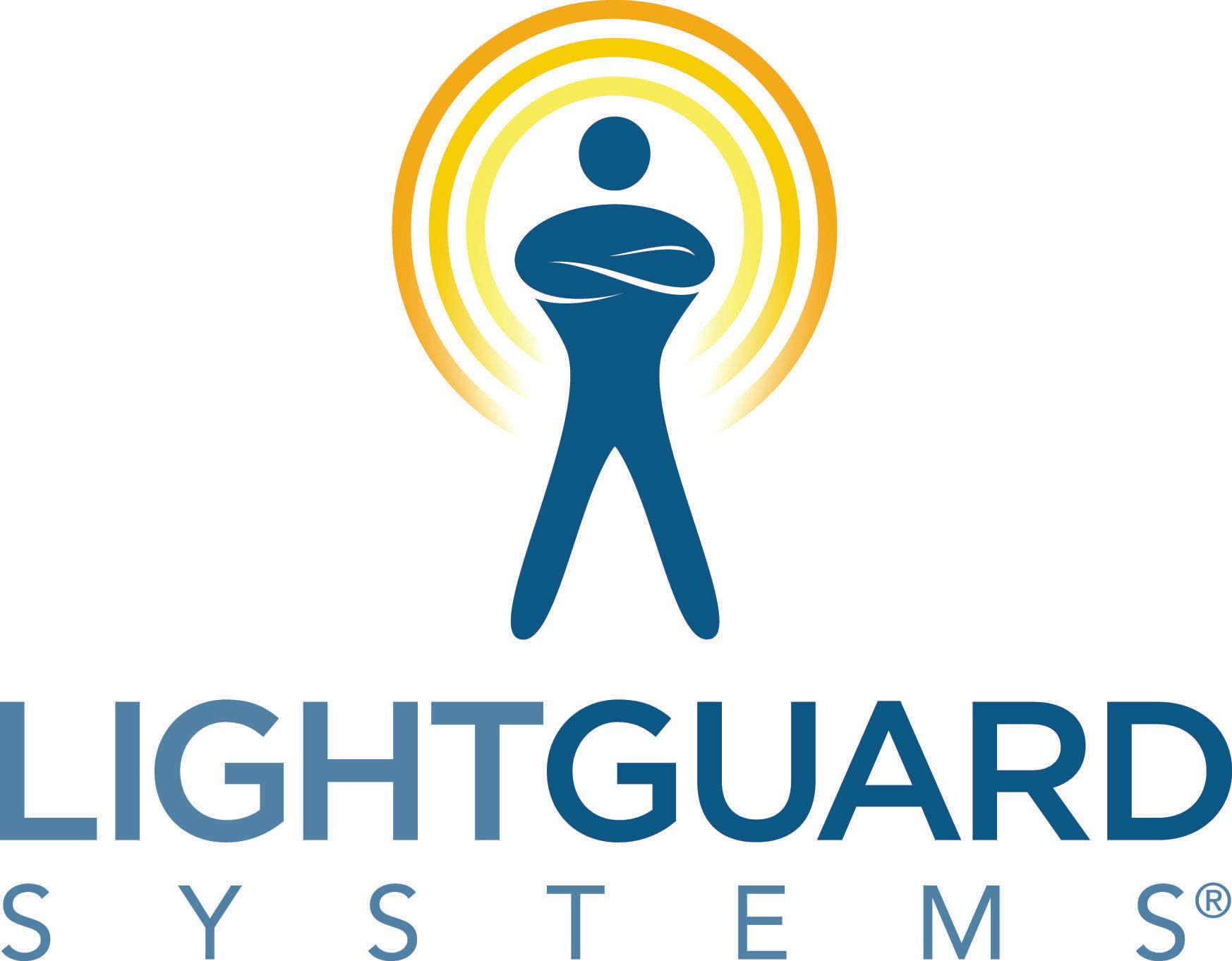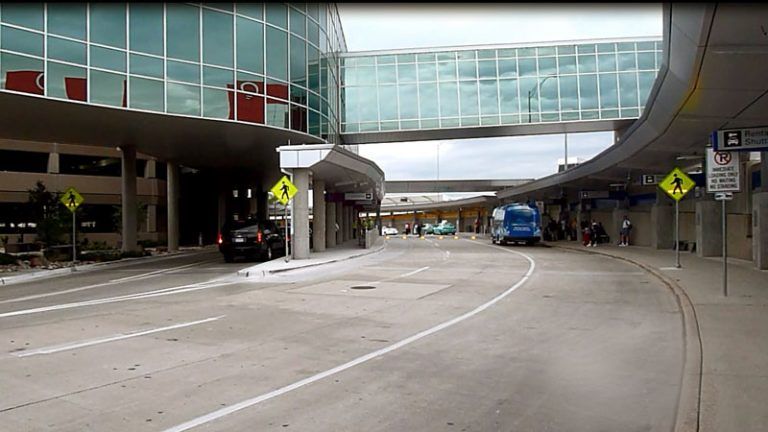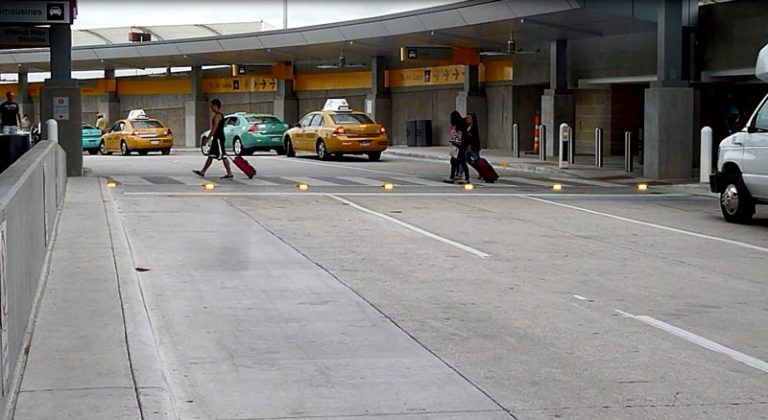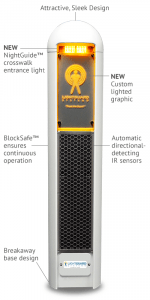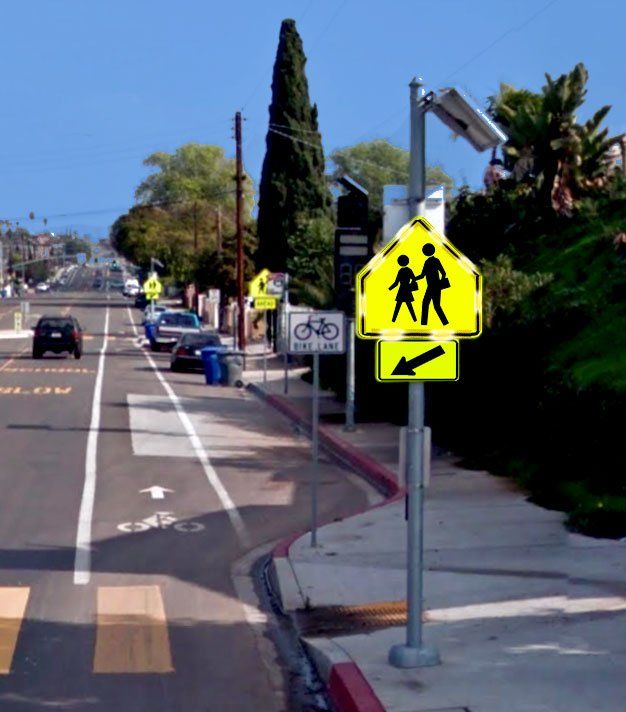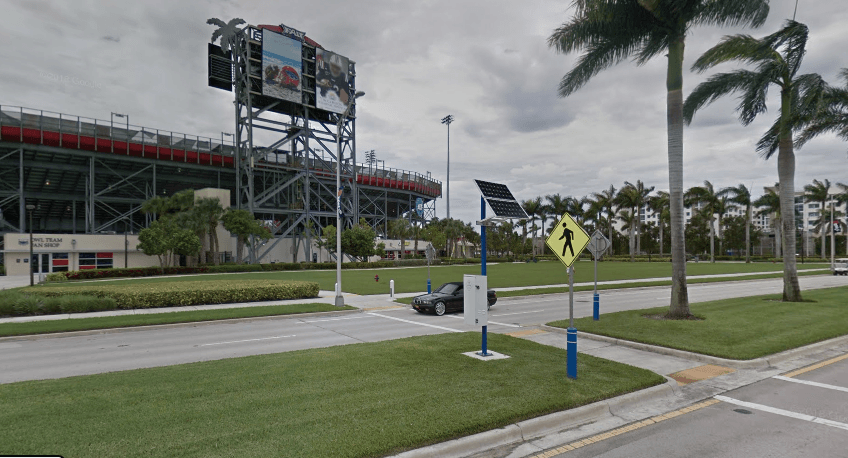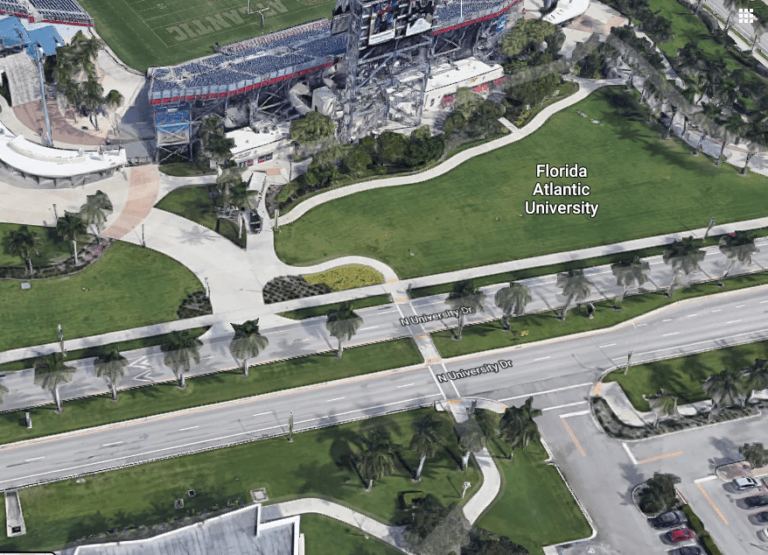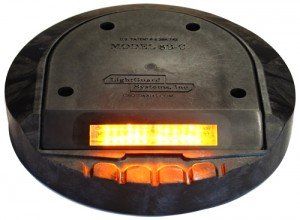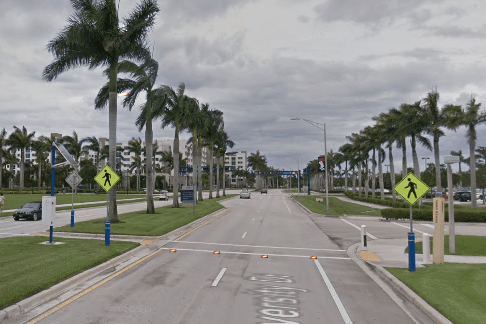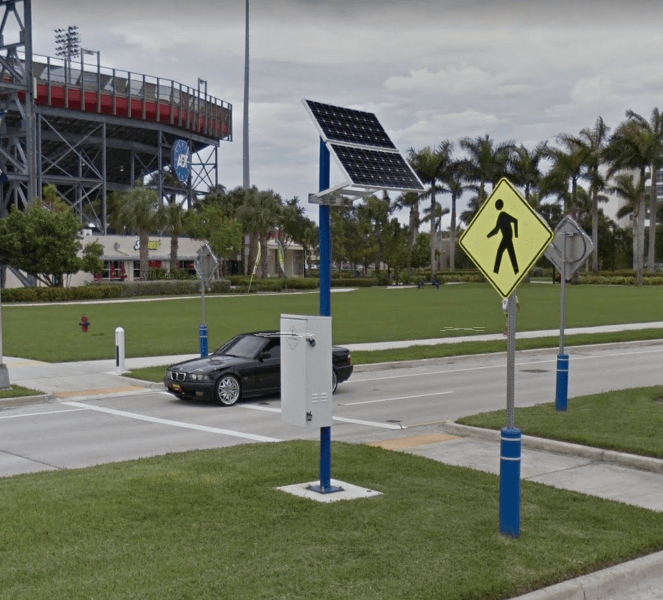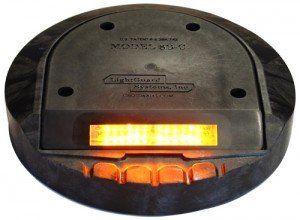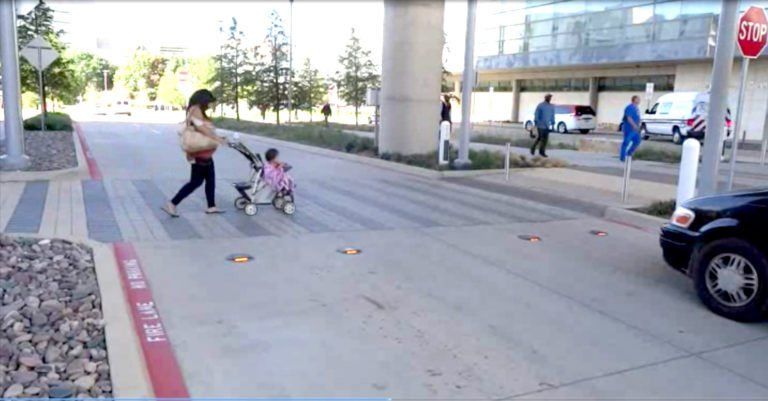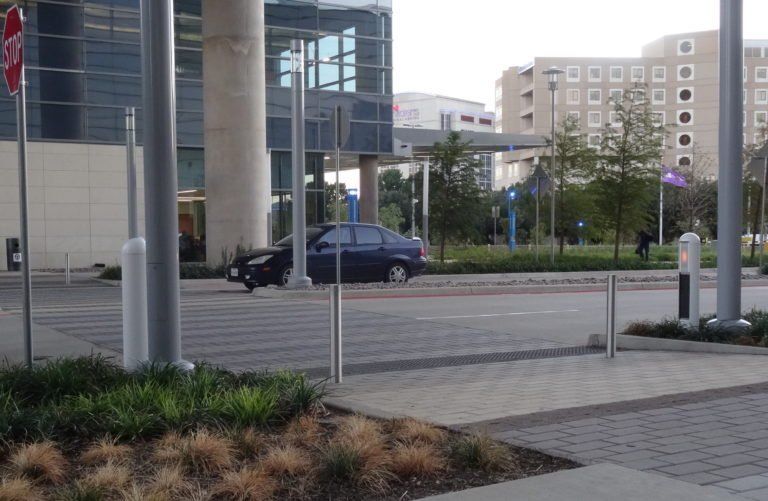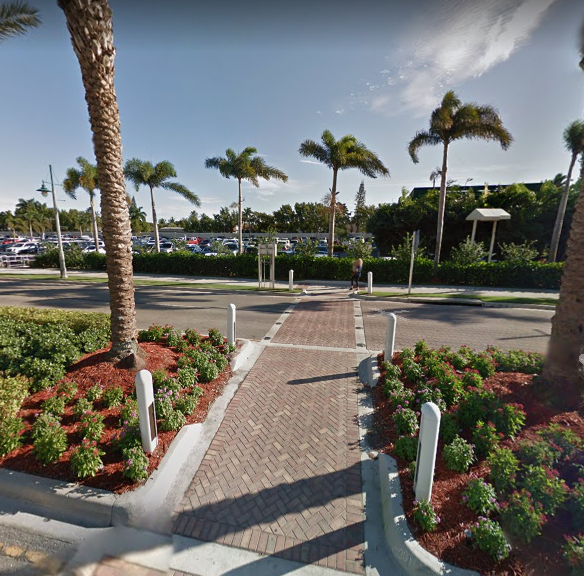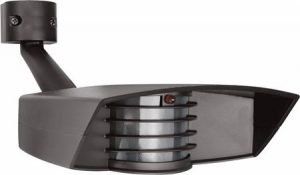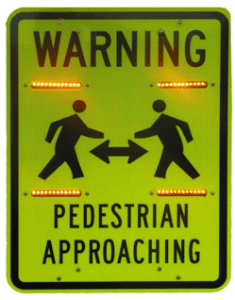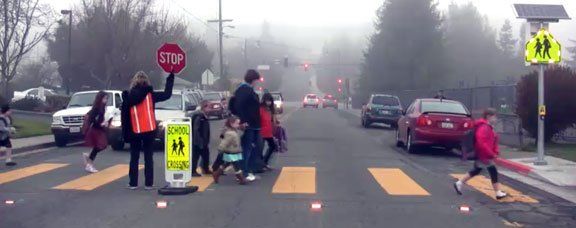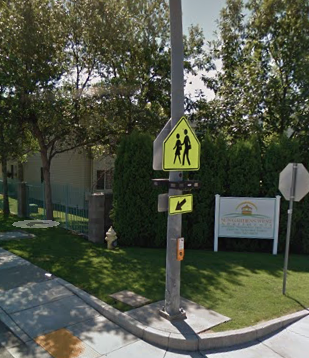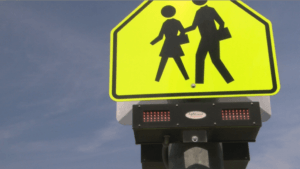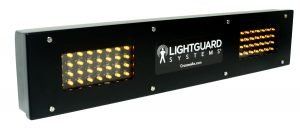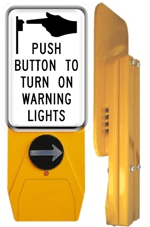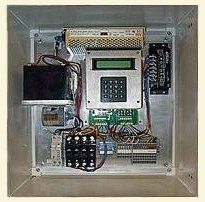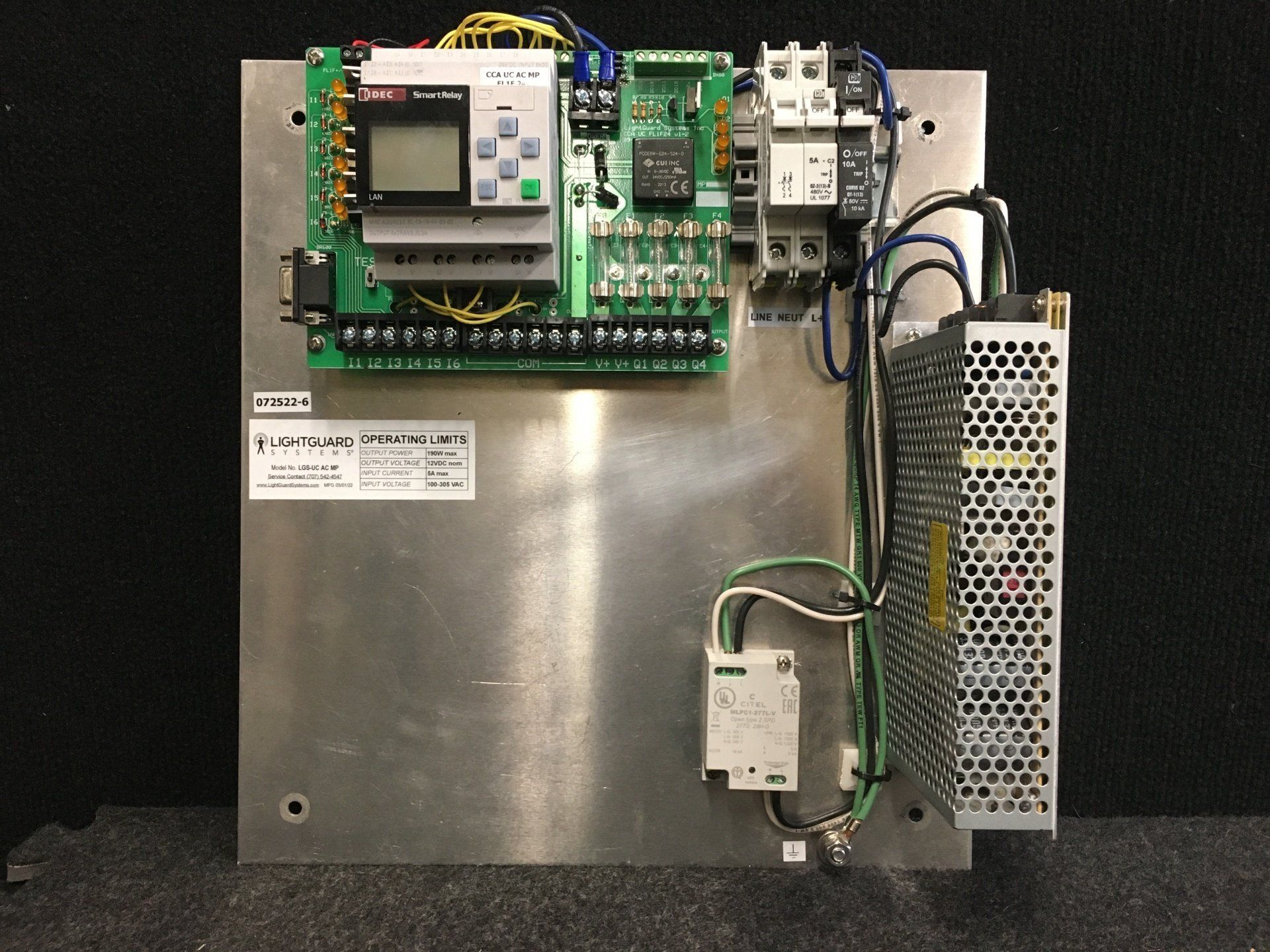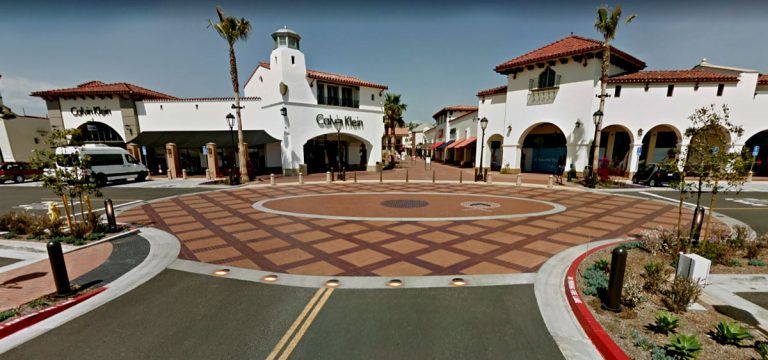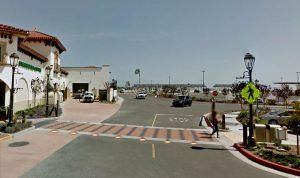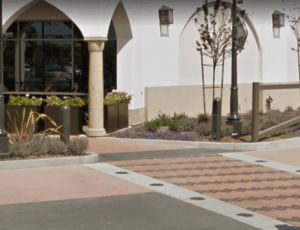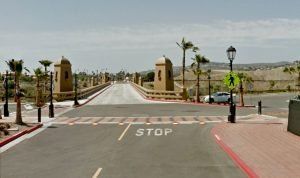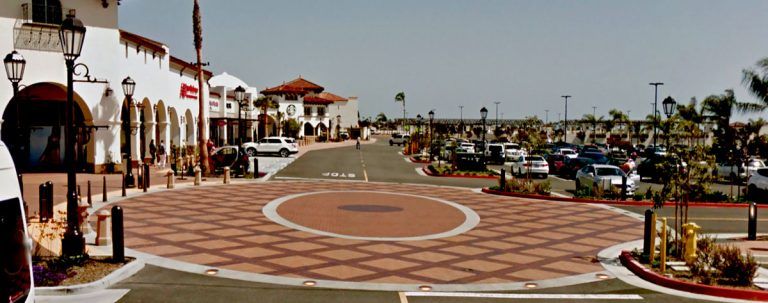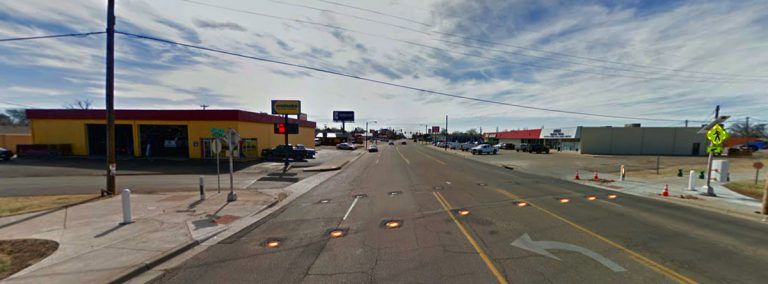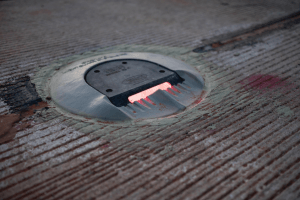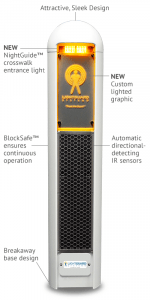Practical Applications for Pedestrian Safety Systems
Pedestrian Safety at Airports
Landside airport crosswalks are among the busiest pedestrian crossings globally, making pedestrian safety at airports a public traffic safety concern. With passive pedestrian-activated bollards, in-roadway warning lights, and flashing LED signs - the hurried and distracted traveling public is given a safer crossing environment.
Approaching motorists are equally distracted as they scan terminal sidewalks for their arriving travelers. Smart Crosswalk™ alerts them of pedestrian activity up to 1,000 feet before the crosswalk, allowing drivers ample time to slow to a stop.
Dallas Love Field, TX, Project Summary
Client: Dallas Love Field Airport, TX
Project Size: 25 In-Roadway Warning Lights, 12 Bollards, 3 LED Border-Enhanced Pedestrian Signs
Year Installed: 2012
Overview: Dallas Love Field needed enhanced safety for their travelers with increased pedestrian visibility and advanced warning to motorists.
Requirements: A robust, flexible traffic safety solution that is effective at warning motorists up to 1,000 feet in advance of pedestrians in a crosswalk.
“Since we installed the LightGuard Systems in-roadway warning lights and LED signs at pedestrian crossings, we’ve really seen an increase in motorist yielding and a positive effect in the overall safety of our travelers.”
—Jimmy Jackson, Electrical Supervisor, Dallas Love Field Airport
LightGuard Systems Airport Installations Include:
ARIZONA
Phoenix Sky Harbor International Airport, Phoenix
CALIFORNIA
Charles M. Schulz Sonoma County Airport, Santa Rosa
John Wayne Orange County Airport, Santa Ana
McClellan Palomar Airport, Carlsbad
San Francisco International Airport, San Francisco
FLORIDA
Jacksonville International Airport, Jacksonville
Miami International Airport, Miami
Orlando Sanford International Airport, Sanford
Palm Beach International Airport, West Palm Beach
HAWAII
Honolulu International Airport, Honolulu
MASSACHUSETTS
Logan International Airport, Boston
OKLAHOMA
Tulsa International Airport, Tulsa
Will Rogers Airport, Oklahoma City
PENNSYLVANIA
Pittsburgh International Airport, Pittsburgh
RHODE ISLAND
T.F. Green International Airport, Warwick
TENNESSEE
Nashville International Airport, Nashville
TEXAS
Dallas-Fort Worth International Airport, Dallas
Dallas Love Field Airport, Dallas
El Paso International Airport, El Paso
San Antonio International Airport, San Antonio
William P. Hobby Airport, Houston
WASHINGTON
Spokane International Airport, Spokane
Citywide Pedestrian Safety
Implement LightGuard Systems’ traffic calming solutions at a single crosswalk location or install them throughout communities and neighborhoods as part of a Citywide pedestrian safety enhancement project.
National City, CA, Citywide Project Summary
Type: Citywide mid-block pedestrian, bike, and school zone safety crossing enhancement
Project Size: 70, 36” x 36” Flashing Solar LED Border-Enhanced Pedestrian, School Crossing & Ped/Bike Warning Signs; 70 push button stations with braille placards
Client: City of National City
Preferred Architects: Dokken Engineering
Preferred Installing Contractor: Perry Electric
Pedestrian Safety at College & University Campuses
College and university campuses have a considerable volume of pedestrian traffic—often more than in other public settings. They feature mixed-use spaces with dorms, cafeterias, retailers, and restaurants accessible via multiple channels—trails, sidewalks, and roadways. This creates a more significant potential for conflicts between motorists and pedestrians.
On most campuses, hotspots exist where pedestrian incidents occur. Facility managers use LightGuard’s robust flashing LED lighted crosswalk systems to enhance pedestrian safety at college and university campuses.
Florida Atlantic University Project Summary
Location: Boca Raton, Florida
Type: Public Sports Stadium
Project Size: 20 in-roadway warning lights, 12 pedestrian detection bollards, 8 LED border-enhanced pedestrian warning signs, and 2 solar controllers with 80W solar panels
Pedestrian Safety at Hospitals
Visitors and patients alike become vulnerable pedestrians once they park their cars on a hospital campus. Our lighted crosswalks are a traffic-calming measure designed to help enforce safer travel conditions by offering hospitals enhanced motorist and pedestrian safety.
Parkland Hospital, TX, Project Summary
Location: Dallas, Texas
Type: Mixed-Use Commercial
Project Size: 12 in-roadway warning lights (IRWL), 8 Bollards, 2 AC PCUs
LightGuard Systems Hospital Installations Include:
ARKANSAS
Arkansas Children’s Hospital, Little Rock
Mercy Hospital, Rogers
CALIFORNIA
Kaiser Permanente Hospital, Fresno
Kaiser Permanente Hospital Selma, CA
Kaiser Permanente Hospital Clovis, CA
Santa Clara Valley Medical Center, San Jose
Scripps Mercy Hospital, San Diego
VA Northern CA Health Care System, Martinez
VA Palo Alto Health Care System, Palo Alto
VA San Diego Healthcare System, San Diego
FLORIDA
Baptist Medical Center Nassau, Fernandino Beach
Mayo Clinic, Jacksonville
Nicklaus Children’s Health System, Miami
MONTANA
Benefis Health System, Great Falls
NEW YORK
NYU Winthrop Hospital, Mineola
OHIO
Bethesda North Hospital, Cincinnati
The Jewish Hospital – Mercy Health, Cincinnati
TEXAS
BaylorScott&White Health, Grapevine
Cook Children’s Hospital, Fort Worth
Christus Spohn Hospital, Corpus Christie Shoreline
Parkland Hospital, Dallas
University of Texas Health Center, San Antonio
WASHINGTON
Seattle Children’s Hospital
Pedestrian Safety at Hotels
Smart Crosswalk lighted crosswalks can be custom designed for use at hotel entrances, parking areas, and on-property crosswalks subject to conflict between pedestrian and vehicular traffic.
Using the most practical combination of in-pavement flashing lights, stand-alone active warning signs, or radar-activated advance warning signs, lighted crosswalks enhance the safety of crossing pedestrians by alerting drivers in advance of their presence inside or waiting to cross at a crosswalk. Pedestrians can automatically or passively active the systems with push-buttons, bollards, and radar devices. Solar wireless activation is available with both our sign systems and RRFB product lines.
In some cases, the in-roadway warning lights or sign systems should be activated by vehicular traffic. The system would then alert the pedestrian of an approaching vehicle. This feature is helpful at locations where vehicles are leaving a garage with blind areas obscuring pedestrians approaching the exit. Other circumstances can be just the opposite where pedestrians are unaware of vehicles either inside the garage or exiting the facility can be dangerous.
Pedestrian Safety at Parking Facilities
Pedestrian safety at parking facilities is paramount to public planners, municipalities, and facility managers. Studies show that as many as one in four pedestrian-related accidents occurs in parking lots. Of these, about 20% result in severe injury or death. Facility owners, managers, and designers are constantly seeking ways to minimize pedestrian accidents.
Where conflicts between vehicular and pedestrian traffic exist, our highly configurable lighted warning solutions are used to emphasize the conflict point(s) and improve visibility and safety.
Trace Lofts Condominium, Seattle, WA, Project Summary
Year Installed: 2007
Type: Parking Exit Safety
Design Engineers: HNTB
Project Size: 5 In-Roadway Warning Lights, 5 Steel Base Plates, 2 Motion Sensors, 1 LED Flashing Pedestrian Approaching Sign, 1 ECP Controller
Crosswalk School Zone Safety
A recent study by Safe Kids Worldwide indicates that as of 2015, approximately five pedestrians died in school zones each week. As city populations continue to increase, traffic safety officials, local government, and school administrators are working together to implement traffic control strategies to decrease distractions and preserve student, driver, and pedestrian safety at school zones.
LightGuard’s lighted traffic control warning devices are an essential component of a community’s public safety strategy. Our highly configurable flashing solar wireless warning sign, RRFB, and in-roadway warning light systems encourage good behavior for pedestrians and motorists within the school zone.
Pasco, WA, School Zone Project Summary
Location: N 24th Ave. & W Sylvester St., Pasco WA
Type: School Zone Safety Project
Funding: Safe Routes to School
Project Size: 4, back-to-back 30” x 30” school crossing & 4 down arrow signs, 2 RRFB-F (front-facing) back-to-back with 2 RRFB-FS (front & side-facing), 2 audible push button stations, 1 AC/PCU
Client: City of Pasco, WA
Shopping Malls Pedestrian Safety
Pedestrian safety at shopping malls is paramount. Distracted shoppers and hurried drivers benefit from the advanced security and warning provided by flashing LED lights embedded into the pavement and flashing LED border-enhanced warning signs.
Outlets at San Clemente Project Summary
Location: San Clemente, CA
Type: Mixed-Use Commercial
Project Size: 69 IRWLs, 36 Bollards, 7 W-11 LED Enhanced Pedestrian Signs
Client: Outlets at San Clemente
Architect: Togawa Smith Martin
Installing Contractor: Sasco Electric
Safe Pedestrian Trail Crossings
Lighted crosswalks are a common traffic safety measure for at-grade mid-block and parallel path trail crossings. Whether in an urban or rural setting, LightGuard Systems has a robust, easy-to-install lighted crosswalk safety solution for trails and pedestrian crossings, including:
- High-intensity flashing LED in-roadway warning lights (IRWL)
- High-intensity flashing LED pedestrian warning signs
- Passive detection bollard sensor activation
- Compact, customizable RAD (Remote Activation Device) sensor activation (directional)
- Non-directional motion sensor activation
- Push-button activation device with audible sounds and braille placards
- AC and/or Solar powered systems
- Wireless AC and/or Solar systems
- Continuous flashing LED warning signs (AC only)
Rock Island Rail Trail Pedestrian Safety Project Summary
Location: Rock Island Rail Trail Georgia Street crossing, Amarillo, TX
Project Size: 16 In-Roadway Warning Lights (IRWL); 16 Steel Snow Plow Blade Resistant Base Plates; 4 Sensor Bollards; 2 W-11 Flashing LED Pedestrian Signs; Solar Powered Controller.
Client: City of Amarillo Parks & Rec
Year Installed: 2017
LightGuard Systems is a registered trademark™ of LightGuard Systems, Inc. Smart Crosswalk is a trademark™ name of LightGuard Systems, Inc. ©2021 LightGuard Systems, Inc. All rights reserved.
Increase Pedestrian Safety in Your City, Airport, Downtown Center, or School Campus With LightGuard Systems! Contact Us Today.
